The Mask of Fu Manchu (1932)
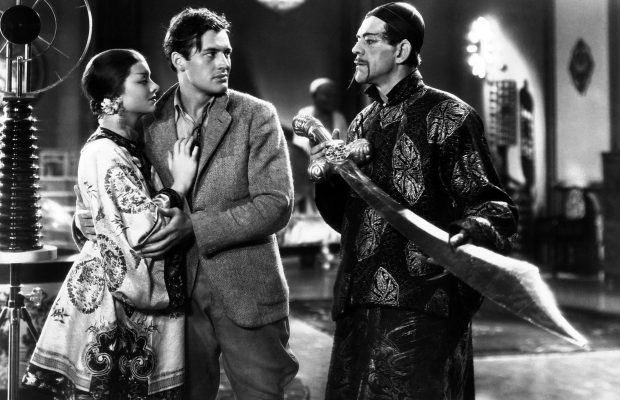
Toronto Film Society presented The Mask of Fu Manchu (1932) on Monday, July 17, 2017 in a double bill with The Strange Love of Martha Ivers as part of the Season 70 Summer Series, Programme 2.
Production and Release: Cosmopolitan Productions, distribution by MGM. Producer: Hunt Stromberg. Director: Charles J. Brabin, (Charles Vidor, uncredited). Screenplay: Irene Kuhn, Edgar Allan Woolf, John Willard; from a novel by Sax Rohmer. Cinematography: Tony Gaudio. Art Director: Cedric Gibbons. Film Editor: Ben Lewis. Gowns: Adrian. Sound Recording: Douglas Shearer, Anstruther MacDonald. Released: November 5, 1932.
Cast: Boris Karloff (Dr. Fu Manchu), Lewis Stone (Nayland Smith), Karen Morley (Sheila Barton), Charles Starrett (Terrence Granville), Myrna Loy (Fah Lo See), Jean Hersholt (Von Berg), Lawrence Grant (Sir Lionel Barton), David Torrence (McLeod), Willie Fung (A Ship Steward).

Although Karen Morley and Charles Starrett are little-known today by the general public, they acted in 213 films combined. Morley did have roles in classic MGM films such as Mata Hari, Dinner at Eight and Gabriel Over the White House but her career ended during the McCarthy era. Although he found his niche in Westerns, it still is surprising that the studios never figured out how to build Starrett into a leading man as he certainly had the looks (profile for sure) for it. Even Myrna Loy’s sadistic character Fah Lo See admits to it and looks forward to fulfilling her fantasies of what she’d like to do to him.
Before becoming the “perfect wife” in The Thin Man, Myrna Loy mostly played exotic temptresses, usually of foreign origins in both silent and talkie films. This was to be her last. The director, Charles Brabin, was a veteran of silent films who had directed the celebrated vamp Theda Bara in her last two movies and had become her husband. So he knew a thing or two about sinuous, dark-haired screen vixens equipped with fatal gazes.
Although the setting was mostly Hollywood’s version of China, the narrative begins in England, and in The Mask of Fu Manchu Myrna was surrounded by Brits: director Brabin, Loy’s co-players Lawrence Grant and Boris Karloff, and the plot involved archaeologists from the British Museum. Karloff, borrowed from Universal, came to this film fresh from his triumph in Frankenstein. According to him, whose Fu Manchu character was the nefarious Harvard-educated Chinese scientist bent on the destruction of the white race, alternated between flawless Oxford English and pidgin. Karloff decided that the only way to approach his maniacal role would be to kid it, and Myrna followed his lead.
MGM went all out on lurid effects, introducing a pit of snapping crocodiles, a bell torture, electrical shocks and walls of metal spikes to the indignities that Fu Manchu’s enemies need face in his headquarters.
The film encountered the usual production problems familiar to the usual MGMG “A” properties. The original director Charles Vidor (he and Morley, incidentally, were married on the same day as the US release of the film) was replaced with Charles Brabin and much of the scrapped footage was reshot, sometimes for the vaguest reasons. One example: Corpulent Jean Hersholt was substituted for Lewis Stone in the spike torture device, because some executive reached a conclusion that a fat captive would make the torture sequence more sadistic and hair-raising. So on that frightening note, we hope you enjoy The Mask of Fu Manchu.
Sourced from Myrna Loy: The Only Good Girl in Hollywood by Emily W. Leider (2011) and The Films of Boris Karloff by Richard Bojarski and Kenneth Beals (1974)
Introduction by Caren Feldman
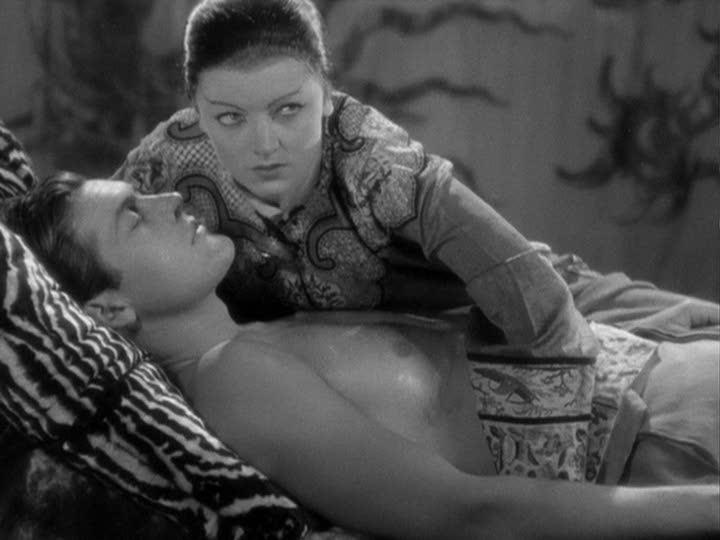
Plotline: The British government charges Sir Lionel Barton with travelling to the edge of the Gobi Desert to beat Fu Manchu to the lost and buried tomb of Genghis Khan, wherein lies the tyrant’s eponymous golden mask and scimitar.
Background Information: The 5th Academy Awards smiled kindly upon MGM. Its Grand Hotel was named Best Picture (to this day, the only winner of that prize not to be nominated in a single other category); The Champ won for Best Story (a category eliminated in 1957 for Best Original Screenplay) and Best Actor (Wallace Berry); and Best Actress went to Helen Hayes for MGM’s The Sin of Madelon Claudet. 1932 fiscal records indicate Universal lost $3.8 million; Warner Bros. $14 million; Paramount $16 million; and Fox $17 million. Yet MGM posted “a dizzy $8 million Depression profit” (Mank 54). An incredible year, by all accounts. Then MGM released Tod Browning’s Freaks. Though it has since developed a cult following, in 1932, Freaks “lost money, shocked audiences, was the shame of the studio, and was sold off to an independent exhibitor–like a deformed baby abandoned on a doorstep” (Mank 55). MGM desperately needed a hit to follow it, and they sought it with their second horror feature of 1932, The Mask of Fu Manchu.
Fu Manchu, or Dr. Fu Manchu (as his friends, out of courtesy, call him), is the Chinese super-genius and criminal mastermind created by Arthur Sarsfield Ward, better known by his pen name Sax Rohmer. Generally interpreted as a paranoid Western projection of expanding Asian power and influence, Fu Manchu first appeared in the 1912 short story The Zayat Kiss, and would ultimately be featured in thirteen novels. The printed word couldn’t contain him, however, and over the next 45 years, the villain would be the titular character in various radio and television programs, not to mention films.
To cast the evil Dr. Fu properly, MGM had to borrow Boris Karloff from Universal. He was hot off of Frankenstein (in which he played the title role after Bela Lugosi turned it down), and had just received a $3,500 guarantee from Universal to star in The Mummy. Mank writes: “In Frankenstein, the actor had growled, howled and screamed; in The Old Dark House, he had madly gurgled; in The Mask of Fu Manchu, he would use his lisping voice for the first time to scare the crowds” (63).
Myrna Loy (Fu’s devilish daughter, Fah Lo See) was typecast as an “exotic vamp, often Oriental” early on in her career and “for nearly ten years, in more than 60 films, she rarely stepped out of character”, The Mask of Fu Manchu being no exception. In 1934, however, she would star opposite William Powell in The Thin Man, and Loy’s new image, paired with Powell, was so popular that several sequels featuring the pair as Nick and Nora Charles were spawned.
Lewis Stone (Sir Nayland Smith) had been a matinée idol on Broadway before making his film début in 1915’s The Man Who Found Out. He was completely grey-haired by the age of 20, which is also about the time he served as an officer in the Spanish-American War of 1898. It wasn’t the last time his acting career would be interrupted by war; he would also serve as a cavalry major during WW1. Following the Armistice, Stone returned to the screen to play “dignified, gentlemanly, romantic heroes” during the Silent Era. His only Oscar nomination came in 1928, as Best Actor for The Patriot. He was fifty at the advent of sound, but his career continued strongly and he even played opposite Greta Garbo in several pictures. Lewis Stone’s filmography approaches 200 films in total; every sound production with MGM. He died of a heart attack at the age of 73, apparently chasing vandals from his property.
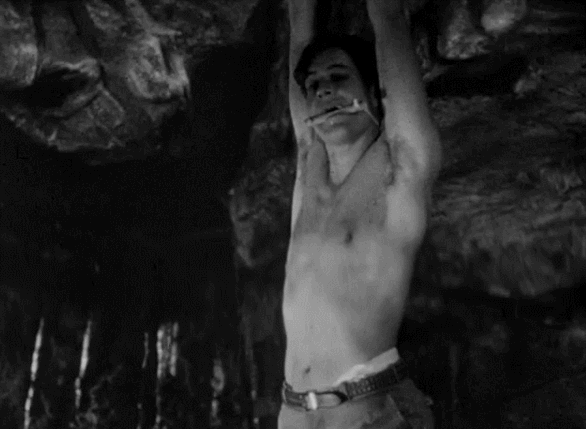
Charles Starrett (Terry Granville) was a football star at Dartmouth College in 1926, when scenes from Richard Dix’s film The Quarterback were shot on campus, making him a natural choice for an extra. Upon graduation, he mostly played stock on Broadway, but managed to land a few supporting roles, as well. By 1930, he was playing “youthful romantic leads” for Paramount, and six years later, he was a cowboy star for Columbia.
Jean Hersholt (Von Berg) will perhaps always remembered more for his achievements as a humanitarian than as an actor. He was born into a renowned show business family in Denmark that toured Europe, and managed to become a leading figure in silent pictures in the 1920s. He was President of both the Academy of Motion Picture Arts and Sciences and the Motion Picture Relief Fund; the latter, he not only presided over but was instrumental in founding. It is likely to be as a result of that accomplishment that the Academy’s Jean Hersholt Humanitarian Award is given annually to film personalities so deserving. Interestingly, Hersholt was also a highly skilled writer and translator, and his translations from the Danish of Hans Christian Andersen’s work are still considered the standard in English.
Karen Morley (Sheila Barton) got her start with the Pasadena Community Players, and by the 1930s had grown to be an “unconventional leading lady of Hollywood”. She quit the screen, though, spending the 1940s mostly on the stage. Her career would end completely in the early 1950s, when she pleaded the Fifth before the House Un-American Activities Committee, when questioned about her allegedly communist sympathies. She then tried to enter politics, but her run for New York State’s Lieutenant Governor, in 1954, was unsuccessful.
The Mask of Fu Manchu is particularly relevant to Morley’s biography, as the man who would ultimately become her first husband was the film’s first, but fired, director Charles Vidor (no relation to King). Originally, the 32-year-old Vidor was slated to direct what would be his directorial début. He began shooting on August 6, but by mid-August, once MGM began reviewing rushes, he had already been fired. MGM, terrified it might have another Freaks in the making, tossed virtually everything Vidor had shot and brought in a team of writers to whip something new together pronto. Coincidentally, Charles Brabin, himself no stranger to pink slips (having been replaced by Fred Niblo on Ben-Hur in 1926), had just recently been fired from Rasputin and the Empress in favour of Richard Boleslawski. He signed on to The Mask Fu Manchu, and everything seemed to be back on track.
Then Paul Bern got shot (or shot himself; we still aren’t sure) in the head. He had been married to no less than Jean Harlow for no less than two months, but when he was found–stark naked in his luxurious hideaway in Benedict Canyon–shortly after midnight of September 5, 1932, “drenched in Harlow’s Mitsouko perfume”, MGM was turned upside down. Harlow was in the middle of shooting Red Dust with Clark Gable and Mary Astor. She would “bravely [return] to Red Dust” following Bern’s cremation, “only to collapse” (Mank 76). Hunt Stromberg, Fu’s producer, was also supervisor to Red Dust, and one can only imagine the stress derived from “cop[ing] with the Metro hysteria, the day-to-day condition of Harlow, and the melodrama on the Red Dust set”, not to mention essentially starting The Mask of Fu Manchu from scratch.
On October 21, 1932, shooting finally wrapped, following a month of re-takes and added scenes, and the film was ready for its gala première in New York by December 2. A smattering of critics gave favourable reviews, assuring audiences that they were in for a thrill; “most critics, however, were aghast” (Mank 82). Variety, perhaps justly, criticized the film’s excessive ending, claiming “the diabolical stuff is piled on so think at the finish, audiences are liable to laugh where they oughtn’t” (82). The film made money, though, with a net profit of $62,000. (83).
Come 1972, when MGM was toying with the idea of re-releasing the film in a triple-bill with Mark of the Vampire and Dr. Jekyll and Mr. Hyde, it was still hated, but this time, because certain aspects of the film had come to be seen as racist. As Gregory William Mank writes: “It was a different world now, one of greater social consciousness–and The Mask of Fu Manchu got nailed” (85). The Japanese-American Citizens League wrote to MGM, damning the film as being demeaning to Asian-Americans, who didn’t even have any speaking roles in it. MGM refused to release the film on VHS until the fall of 1992, and though they denied that this decision had anything to do with racism, the version of the film they released on VHS was highly edited of controversial epithets. Sixty-five seconds’ worth of racist zingers were chopped, including Fu calling Granville an “accursed son of a white dog” and vowing to “wipe out [his] whole accursed white race” (87).

Facts and Perhaps a Few Factoids:
Unsurprisingly, the Chinese government hated Fu Manchu and pleaded with Rohmer to kill him off for the good of the Chinese international image. In a sense, Rohmer acquiesced: Two separate plotlines dropped the curtain on the life of his nefarious villain, but twice was he to return from his demise to renew his mission as scourge to “the accursed white race”.
Do Fu Manchu’s henchmen look familiar? If you find they resemble a certain Academy Award statue, you may be on to something. Cedric Gibbons, the film’s Art Director, also designed the iconic Oscar statuette in 1928.
Myrna Loy’s character was named Fah Lo Suee in Rohmer’s novel, but Fah Lo See in the film. Gregory William Mank writes: “MGM, possibly fearing the response of pig farmers in the audience, made the adjustment” (64).
Information collected from: TMC.com; Encyclopedia Britannica; IMDB.com; Mank, Gregory William. Hollywood cauldron: thirteen horror films from the genre’s golden age. Jefferson, NC: McFarland, 2001. Print.
Notes by Oliver Kraeker

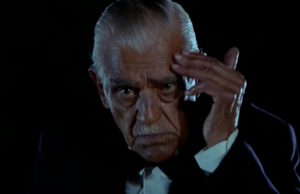
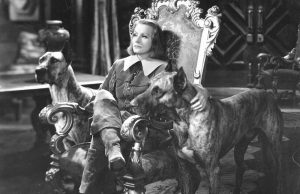
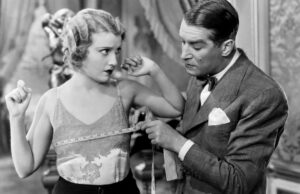






Leave a Reply